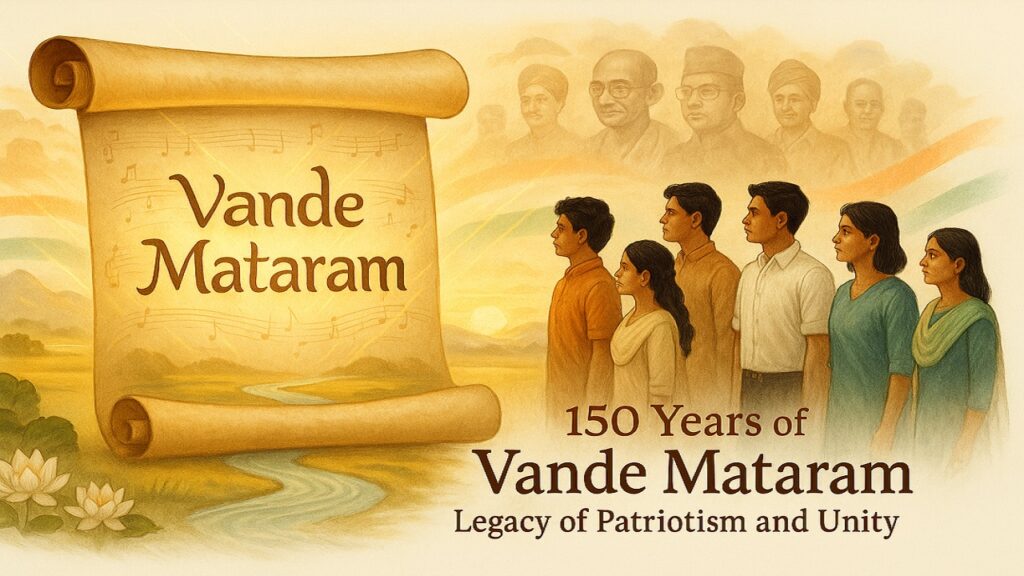150 Years of Vande Mataram: Legacy of Patriotism and Unity

Context:
- On 7th November 2025, the Prime Minister of India inaugurated year-long celebrations in New Delhi to mark 150 years of the National Song “Vande Mataram”.
- This initiative (2025–26) aims to connect citizens, particularly the youth, with the song’s revolutionary and spiritual essence that united India’s freedom struggle.
About 150 Years of Vande Mataram
Origin:
- Written by Bankimchandra Chatterji on 7th November 1875 (Akshaya Navami).
- First appeared in his literary journal Bangadarshan as part of the novel Anandamath.
- The song portrayed Mother India as divine, strong, and nurturing, inspiring patriotism through literature.
History & Essence:
- Evolved from a poetic invocation to a national mantra of resistance.
- In 1896, Rabindranath Tagore publicly sang it at the Calcutta Congress Session.
- The lyrics—“Sujalam, Sufalam, Malayaja Sheetalam”—celebrate India’s natural beauty and moral strength, envisioning a free, prosperous nation.
Key Features:
- Symbol of unity, blending spiritual devotion and national identity.
- Recognised by the Constituent Assembly (1950) as having equal honour with the National Anthem.
- Represents the civilizational idea of Bharat, emphasizing moral strength, knowledge, and courage.
Role in the Freedom Struggle:
- Served as a rallying cry during the Swadeshi Andolan (1905) and anti-Partition protests in Bengal.
- Banned by the British for its revolutionary power but continued to echo across marches, prisons, and gallows.
- Revered by leaders like Sri Aurobindo (as a mantra of awakening) and Mahatma Gandhi (as a vision of undivided India).
- Unified diverse regions, faiths, and languages under a common patriotic spirit.
Vande Mataram Movement in Gulbarga (Karnataka)
Overview:
- A regional resistance movement during the Hyderabad-Karnataka freedom struggle (1948).
- Inspired by “Vande Mataram”, it opposed the Nizam’s autocratic rule.
History & Events:
- On 9th November 1948, leaders like Sharanabasappa and Qadeer Dargah led peaceful marches, chanting Vande Mataram.
- Participants faced violent repression by the Nizam’s police.
- The movement spread across the region, culminating in unity pledges presented to Sardar Vallabhbhai Patel, who praised their courage and ensured integration into the Indian Union.
Conclusion:
- The 150th anniversary of “Vande Mataram” celebrates not just a song, but India’s struggle for freedom, unity, and cultural identity.
- Its enduring significance lies in inspiring patriotism, moral strength, and collective responsibility, linking citizens across generations with the spiritual and revolutionary ethos of India.
Source : PIB
